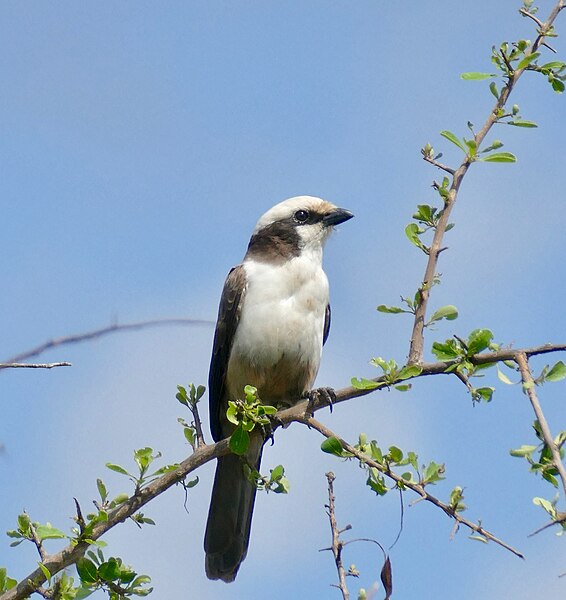Featured projects
The following feature articles highlight research projects done using resources at the Center for Advanced Research Computing.
From Lab to Field: CARC Computing Powers AR-Enhanced Robotics for Infrastructure Safety
 A pioneering 2024 study published in the International Journal of Intelligent Robotics and Applications introduces a cutting-edge augmented reality system that makes infrastructure inspections faster, safer, and more precise — and it’s innovation that came to life thanks to the computing power of the University of New Mexico’s Center for Advanced Research Computing.
A pioneering 2024 study published in the International Journal of Intelligent Robotics and Applications introduces a cutting-edge augmented reality system that makes infrastructure inspections faster, safer, and more precise — and it’s innovation that came to life thanks to the computing power of the University of New Mexico’s Center for Advanced Research Computing.
Harnessing CARC Power to Predict Global Dengue Outbreaks Amid El Niño Swings
 A groundbreaking 2024 study published in Environmental Research sheds new light on how El Niño events amplify the global risk of dengue fever outbreaks — and it’s research that would not have been possible without the computing power of the University of New Mexico’s Center for Advanced Research Computing.
A groundbreaking 2024 study published in Environmental Research sheds new light on how El Niño events amplify the global risk of dengue fever outbreaks — and it’s research that would not have been possible without the computing power of the University of New Mexico’s Center for Advanced Research Computing.
Groundbreaking research unveils innovative method to probe dark matter using gravitational lensing
 In a groundbreaking research initiative led by University of New Mexico (UNM) Physics PhD candidate Birendra Dhanasingham, supervised by UNM Physics professor Francis-Yan Cyr-Racine, unveiled a novel approach to unravel the mysteries of dark matter using gravitational lensing, a phenomenon predicted by Einstein's theory of relativity.
In a groundbreaking research initiative led by University of New Mexico (UNM) Physics PhD candidate Birendra Dhanasingham, supervised by UNM Physics professor Francis-Yan Cyr-Racine, unveiled a novel approach to unravel the mysteries of dark matter using gravitational lensing, a phenomenon predicted by Einstein's theory of relativity.
Research efforts play a crucial role in rescuing a Rio Grande fish species from extinction
 In the heart of the Rio Grande basin, the Rio Grande Silvery Minnow (Hybognathus amarus), a unique fish species, is struggling to survive. Habitat changes, river disruptionresearch/silvery-minnows caused by dams and water diversion structures, and recent severe drought conditions in the Southwestern United States have intensified the struggle for the Rio Grande Silvery Minnow, resulting in population bottlenecks and even population collapse. These events, linked to diminished snowmelt runoff and increased river drying, have threatened the species' reproductive success and recruitment.
In the heart of the Rio Grande basin, the Rio Grande Silvery Minnow (Hybognathus amarus), a unique fish species, is struggling to survive. Habitat changes, river disruptionresearch/silvery-minnows caused by dams and water diversion structures, and recent severe drought conditions in the Southwestern United States have intensified the struggle for the Rio Grande Silvery Minnow, resulting in population bottlenecks and even population collapse. These events, linked to diminished snowmelt runoff and increased river drying, have threatened the species' reproductive success and recruitment.
UNM Biology PhD student research leads to the discovery of a new bird family
For nearly two centuries, northern and southern white-crowned shrikes were considered to be part of the shrike bird family, Laniidae. However, the data that was gathered through McCullough’s extensive research would show that the northern and southern white-crowned shrikes were clearly different from the other shrike species they had known thus far.
UNM scientists concerned about rising wildfire threats to southwestern U.S. forests

Scientists at the University of New Mexico recently published a research article describing a new method of modeling reforestation after wildfires. Research has shown an important link between topography and how plants recover after a fire. Topography refers to the natural shape and features of the land, such as its hills, valleys, and overall terrain. Previous models often overlooked this important factor, primarily focusing on weather patterns instead. UNM scientists wanted to focus on the link between topography and how plants recover after a fire, and better understand reforestation in severely burned forests using an updated simulation model while factoring in climate change.
Computational modeling unveils dynamics of SARS-CoV-2 infection
A team of researchers led by University of New Mexico Computer Science Professor Melanie Moses has developed a groundbreaking computational model called Spatial Immune Model of Coronavirus, which offers invaluable insights into the spatial-temporal dynamics of viral spread and immune response within the human lungs.
Students utilize CARC resources through Parallel Processing course
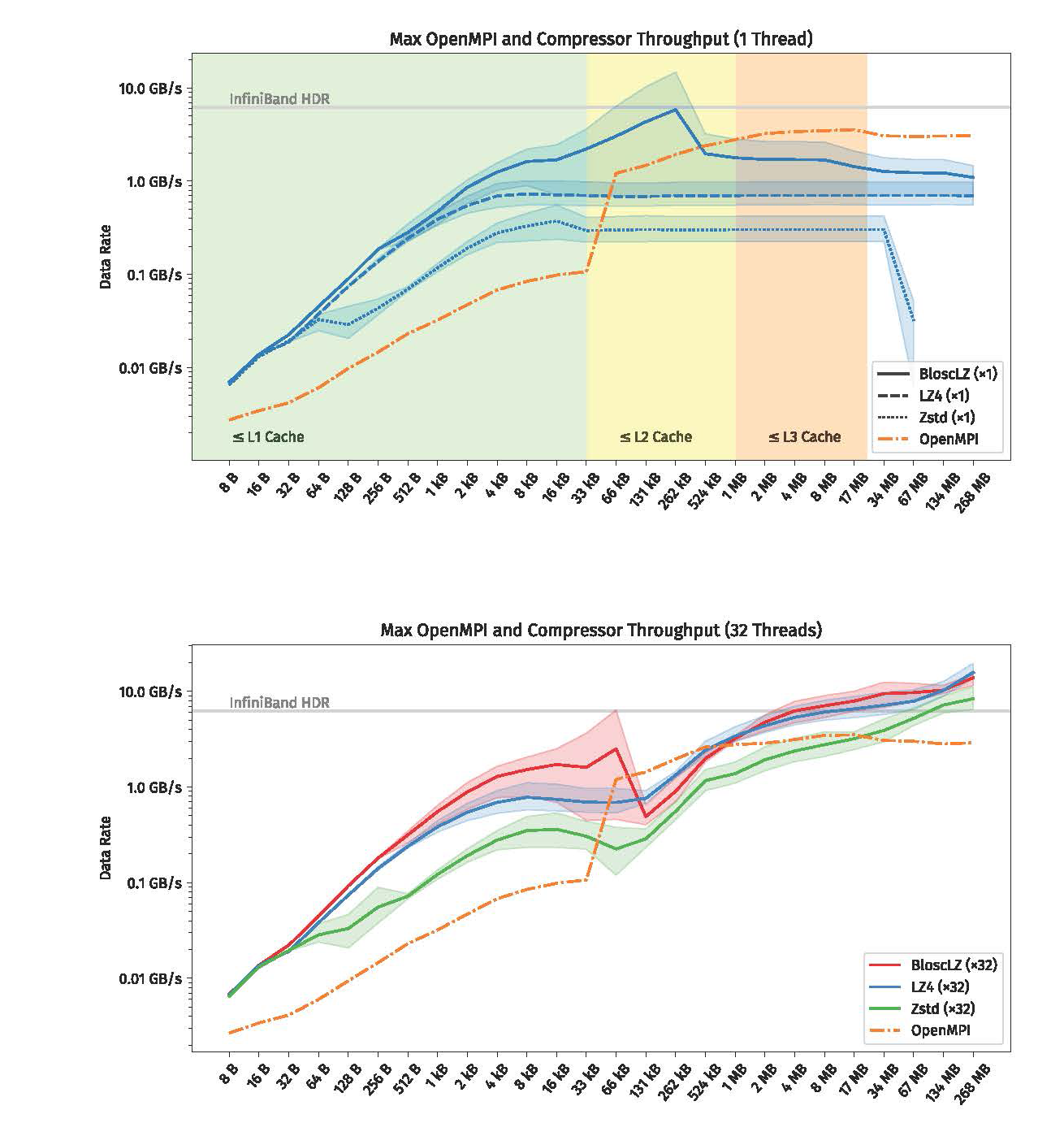 Parallel processing is a method used in computer science to speed up the execution of tasks by dividing them into smaller parts and processing these parts simultaneously. This is a process that allows computers to tackle complex problems more efficiently and quickly, making it an essential tool for various applications in our daily lives, such as video editing, gaming, and scientific simulations. Introduction to Parallel Processing (CS442/542) is a course offered every other Fall semester at the University of New Mexico. The course enables students to grasp the complexities of parallel processing while using resources from the Center for Advanced Research Computing.
Parallel processing is a method used in computer science to speed up the execution of tasks by dividing them into smaller parts and processing these parts simultaneously. This is a process that allows computers to tackle complex problems more efficiently and quickly, making it an essential tool for various applications in our daily lives, such as video editing, gaming, and scientific simulations. Introduction to Parallel Processing (CS442/542) is a course offered every other Fall semester at the University of New Mexico. The course enables students to grasp the complexities of parallel processing while using resources from the Center for Advanced Research Computing.
CARC graduate assistant creates a program capable of style transfer
Summer 2022 Center for Advanced Research Computing Graduate Assistant Jacob McCullough created a program capable of style transfer, where a trained algorithm identifies the style of an image and transfers it onto another. The process of style transfer requires a program that is capable of digital manipulation to images or videos. McCullough made this possible using CARC resources by copying and then modifying the code of a program used to classify images.
Computational chemistry researchers complete millennia of research in four years
UNM Distinguished Professor of Chemistry and Chemical Biology Hua Guo and his research team have logged an impressive 7,257 compute years on Center for Advanced Research Computing (CARC) systems in the past four years. Guo’s work is in computational chemistry, which allows researchers to simulate chemical reactions on computers rather than conducting real-life experiments that can be dangerous, costly and time-consuming.
New UNM Earth Science Professor to study the health of groundwater aquifers across the state
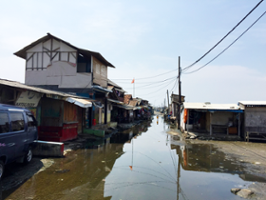 Eric Lindsey, Assistant Professor of Earth & Planetary Sciences at the University of New Mexico (UNM), has concerns about the sustainability of aquifers around the world. Aquifers, nature’s underground water storage spaces, are vital to life on this planet. Lindsey was recently awarded a National Science Foundation grant to establish new computer storage nodes at UNM's Center for Advance Research Computing (CARC) to store his hundreds of terabytes of InSAR satellite data to study aquifers. This increased storage capacity combined with CARC’s high-speed parallel computing abilities will allow Lindsey to process vast amount of data to create a current land subsidence map for the entire state of New Mexico and beyond.
Eric Lindsey, Assistant Professor of Earth & Planetary Sciences at the University of New Mexico (UNM), has concerns about the sustainability of aquifers around the world. Aquifers, nature’s underground water storage spaces, are vital to life on this planet. Lindsey was recently awarded a National Science Foundation grant to establish new computer storage nodes at UNM's Center for Advance Research Computing (CARC) to store his hundreds of terabytes of InSAR satellite data to study aquifers. This increased storage capacity combined with CARC’s high-speed parallel computing abilities will allow Lindsey to process vast amount of data to create a current land subsidence map for the entire state of New Mexico and beyond.
Explore or exploit: How our brains make choices
We make countless choices every day. It may be a difficult, complex choice—whether to take the job in a new city or stay in a current position—or be as simple as choosing between visiting a new restaurant or going to an old favorite. Decision-making shapes our knowledge and our perceptions of the world around us. Dr. Jeremy Hogeveen, Assistant Professor in the Department of Psychology details his search for answers in a new article published in the prestigious neuroscience journal Neuron.
Talaat studies molten lead as coolant for advanced clean energy nuclear reactors
Researchers all over the world are pursuing methods to develop clean, green, and renewable energy resources to reduce our impact on the planet. This includes research dedicated to building new, technologically advanced, nuclear reactors to support the production of clean energy. The U.S. Department of Energy’s (DOE) nuclear Versatile Test Reactor (VTR) was conceived with these technological advances in mind. Khaled Talaat, PhD candidate in the University of New Mexico’s (UNM) Nuclear Engineering Department, is one of the researchers on the VTR project.
CARC enables groundbreaking immunology discovery
Associate Professor of Biology at the University of New Mexico’s Center for Evolutionary and Theoretical Immunology (CETI) Irene Salinas and her research team recently concluded a study on African lungfish cocoons which provided groundbreaking discoveries with potential implications for studies on human immune systems.
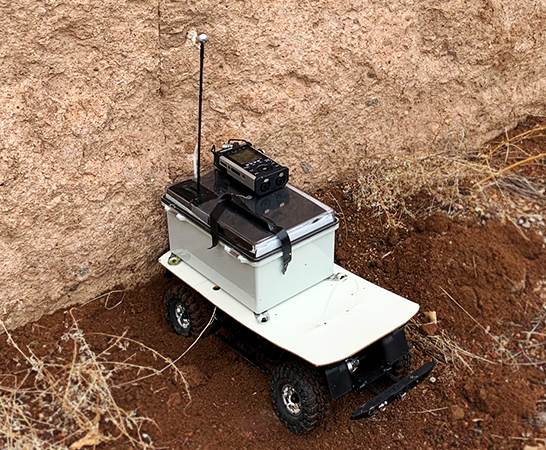
Students create remote-controlled robot to detect potential rockslide danger
The University of New Mexico’s (UNM) Smart Management of Infrastructure Laboratory (SMILab) has created a remote-controlled (RC) robot designed to detect potential rockslide danger. The robot, affectionately nicknamed “Brutus,” pinpoints damaged and unstable rocks for roadside safety inspectors, keeping them safely out of harm’s way during inspections.
CARC integral in PhD candidate’s groundbreaking dissertation on solar forecasting
Guillermo Terrén-Serrano, PhD candidate in the Electrical and Computer Engineering (ECE) Department of the University of New Mexico (UNM), has designed a new way for solar forecasters to predict future cloud cover. Terrén-Serrano and his advisor, ECE Professor Manel Martínez-Ramón, have taken an innovative, multidisciplinary approach to solar cloud cover forecasting by building a state-of-the-art, forecasting system completely from scratch. Their system will provide renewable energy providers with a clear sky index so they will know when to compensate for the drop in solar energy to ensure a steady energy transmission to the power grid.
UNM doctoral candidate develops open-source fluid dynamics code
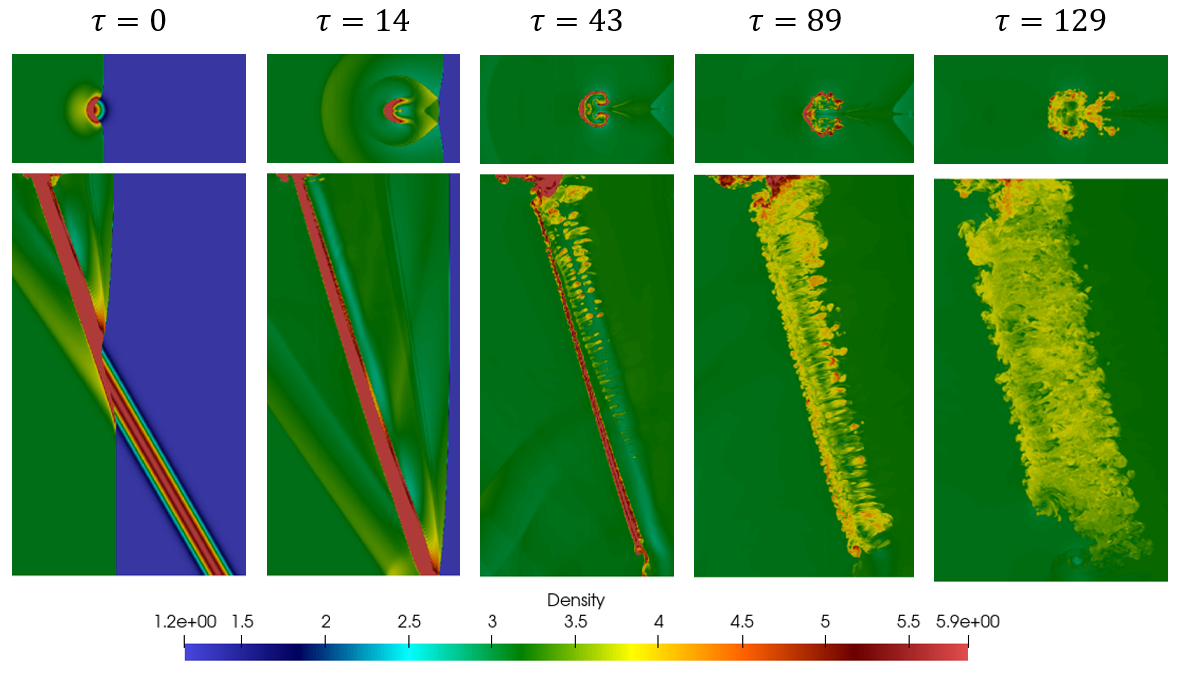 When Brian Romero began his doctoral research in the Advanced Fluids Lab, led by Professor Svetlana Poroseva at the University of New Mexico’s Mechanical Engineering Department, he quickly realized that the tool he needed to complete his work had not yet been developed. He needed a computational fluid dynamics solver capable of simulating supersonic flows with shock waves. So, Romero turned to UNM’s Center for Advanced Research Computing and designed FIESTA© (Fast Interface Evolution, Shocks and Transition in the Atmosphere) to meet his needs as well as those of future researchers.
When Brian Romero began his doctoral research in the Advanced Fluids Lab, led by Professor Svetlana Poroseva at the University of New Mexico’s Mechanical Engineering Department, he quickly realized that the tool he needed to complete his work had not yet been developed. He needed a computational fluid dynamics solver capable of simulating supersonic flows with shock waves. So, Romero turned to UNM’s Center for Advanced Research Computing and designed FIESTA© (Fast Interface Evolution, Shocks and Transition in the Atmosphere) to meet his needs as well as those of future researchers.
Ethan Gyllenhaal and colleagues use CARC resources to explain genetic histories of island birds
Ph.D. candidate Ethan Gyllenhaal has been engaged in a series of research projects that use genomic analyses to explain the complex evolutionary processes that take place within and between island bird populations. He is conducting this research in collaboration with researchers from the UNM Andersen Lab and the University of Kansas Moyle Lab. One of his recent projects, outlined in a paper published in Molecular Ecology, explains the existence of an unexpected genetic finding in Australian Spectacled Monarch birds.
NMDID supports worldwide research during COVID-19 pandemic
In February of 2020, Professor and Forensic Anthropologist Heather Edgar, in association with Western Michigan University Associate Professor Shamsi Berry and the Center for Advanced Research Computing, unveiled a groundbreaking new website that gives researchers across the globe access to the demographic information and deidentified complete body scans of over 15,000 deceased New Mexicans. Now, after its first 20 months of operations, Edgar and Berry are preparing to publish some of the insights they have learned from this project, including the important role their database has played in supporting worldwide research throughout a global pandemic.
Manjavacas and colleagues investigate the cause of haziness in nineteenth century daguerreotype photography
 In 2019, a team of scientists, led by UNM Associate Professor Alejandro Manjavacas, used Center for Advanced Research Computing resources to make a discovery explaining some of the mysterious characteristics of daguerreotypes. Through continued efforts, Manjavacas’ research is helping to explain the characteristic haze that develops over these photographs as they age. This research will help museums like the Metropolitan Museum of Art (MET) preserve antique photographs for future generations.
In 2019, a team of scientists, led by UNM Associate Professor Alejandro Manjavacas, used Center for Advanced Research Computing resources to make a discovery explaining some of the mysterious characteristics of daguerreotypes. Through continued efforts, Manjavacas’ research is helping to explain the characteristic haze that develops over these photographs as they age. This research will help museums like the Metropolitan Museum of Art (MET) preserve antique photographs for future generations.
Ivana Gonzales uses CARC to improve fuel cell technology
Research Associate Professor Ivana Gonzales has been using Center for Advanced Research Computing resources to develop improved fuel cell technology. In connection with a broad network of researchers, Gonzales uses computer simulations to interpret experimental data and predict the performance of fuel cells composed of different materials. The fuel cells she helps to create may be implemented in a wide range of products to increase energy efficiency and lower greenhouse gas emission.
Bruzewski and colleagues search for ‘sneaky’ pulsars
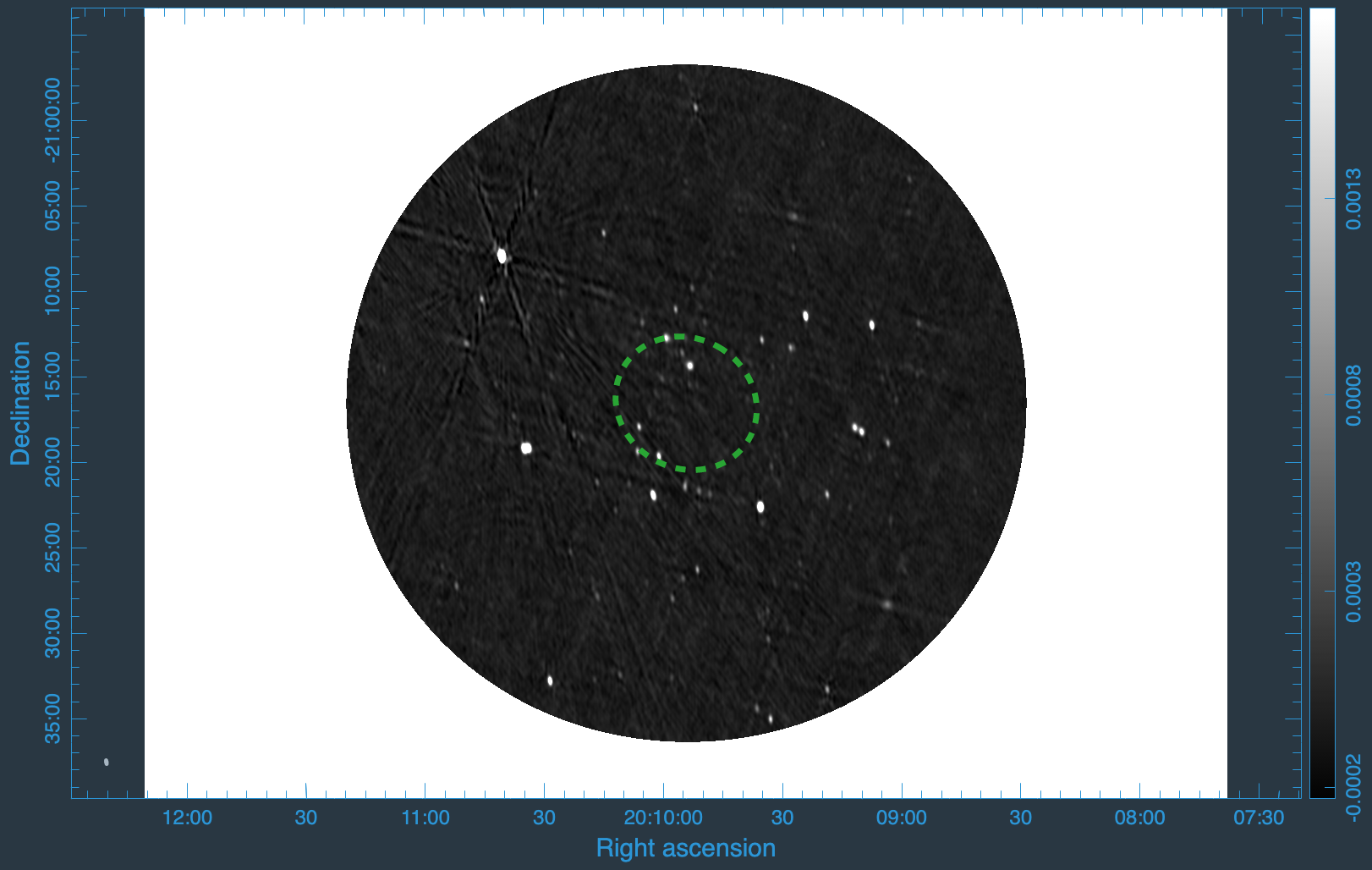 Department of Physics & Astronomy Ph.D. Student Seth Bruzewski, along with Adjunct Professor Frank Schinzel and Distinguished Professor Greg Taylor, has been using CARC resources to identify “sneaky” pulsars based on radio and gamma ray emissions. Funded by NASA’s Fermi Guest Investigator Program, the team uses data from the Fermi Gamma Ray Space Telescope (Fermi) and the Very Large Array (VLA) to find and analyze these mysterious celestial bodies.
Department of Physics & Astronomy Ph.D. Student Seth Bruzewski, along with Adjunct Professor Frank Schinzel and Distinguished Professor Greg Taylor, has been using CARC resources to identify “sneaky” pulsars based on radio and gamma ray emissions. Funded by NASA’s Fermi Guest Investigator Program, the team uses data from the Fermi Gamma Ray Space Telescope (Fermi) and the Very Large Array (VLA) to find and analyze these mysterious celestial bodies.
Researchers use computer modeling to understand COVID-19 infection mechanism
New Mexico Consortium Researcher Wataru Nishima, in collaboration with University of Warsaw Assistant Professor Marta Kulik, has authored a paper detailing new insights into the infection mechanism of COVID-19. The team used Center for Advanced Research Computing systems to develop a novel computational model of SARS-CoV-2, the virus that causes COVID-19, and simulate the way it attaches to host cells.
Jocelyn Colella receives 2021 Popejoy Dissertation Prize for research on weasels
Recent UNM Ph.D. graduate and newly appointed Assistant Professor and Curator of Mammals at the University of Kansas Jocelyn Colella has been awarded the 2021 Popejoy Dissertation Prize for her work studying the genetic diversity of weasels. Her research, including the use of CARC resources to conduct analyses of genomic sequences, resulted in new insights into the evolutionary processes that shape boreal species diversity in response to Earth’s glacial-interglacial cycles.
UNM biologists use genomic sequencing to inform preservation efforts for Gila Trout
 Ph.D.student David Camak, Professor and Curator of Fishes at the Museum of Southwestern Biology Thomas Turner, and Professor Megan Osborne recently published a paper using computing resources at CARC to analyze genomic sequences of fish. Their work will inform local efforts to preserve Gila Trout.
Ph.D.student David Camak, Professor and Curator of Fishes at the Museum of Southwestern Biology Thomas Turner, and Professor Megan Osborne recently published a paper using computing resources at CARC to analyze genomic sequences of fish. Their work will inform local efforts to preserve Gila Trout.
SMILab develops new low-cost strain sensor
Researchers from the Smart Management of Infrastructure Laboratory (SMILab), located in the Center for Advanced Research Computing, have developed a new strain sensor as a part of the Low-Cost Efficient Wireless Intelligent Sensors (LEWIS) project. The new sensor, called the LEWIS-S, is easy to use, wireless, and can be offered at about 5% of the cost of standard commercial strain sensing equipment.
Team of UNM scientists find landing spot for the Mars Perseverance Rover
 Department of Earth and Planetary Sciences Professor Louis Scuderi, in association with a team of researchers from the University of New Mexico and Los Alamos National Laboratory (LANL), used remote sensing and Geographical Information System (GIS) software and CARC computing resources to identify an ideal landing spot for NASA’s Mars Perseverance Rover.
Department of Earth and Planetary Sciences Professor Louis Scuderi, in association with a team of researchers from the University of New Mexico and Los Alamos National Laboratory (LANL), used remote sensing and Geographical Information System (GIS) software and CARC computing resources to identify an ideal landing spot for NASA’s Mars Perseverance Rover.
UNM researchers optimize solar power using artificial intelligence
Department of Electrical & Computer Engineering Ph.D. candidate Guillermo Terrén-Serrano and Professor Manel Martínez-Ramón, in association with New Mexico EPSCoR, have developed an artificial intelligence algorithm that optimizes the performance of solar power by predicting cloud cover.
Domman and Dinwiddie discover new COVID variation in New Mexico population
Daryl Domman, Assistant Professor at the UNM Center for Global Health, and Darrell Dinwiddie, Assistant Professor in the UNM Department of Pediatrics, have discovered a novel variant of the SARS-CoV-2 virus among COVID-positive samples in New Mexico. The two have been working with the New Mexico Department of Health and other health officials to sequence the genomes of Coronavirus samples from across the state, as well as those from other regions of the Rocky Mountains. A new variant has been observed in New Mexican samples dating back to December 2020.
UNM mechanical engineers develop a new way to solve deformation instability problems
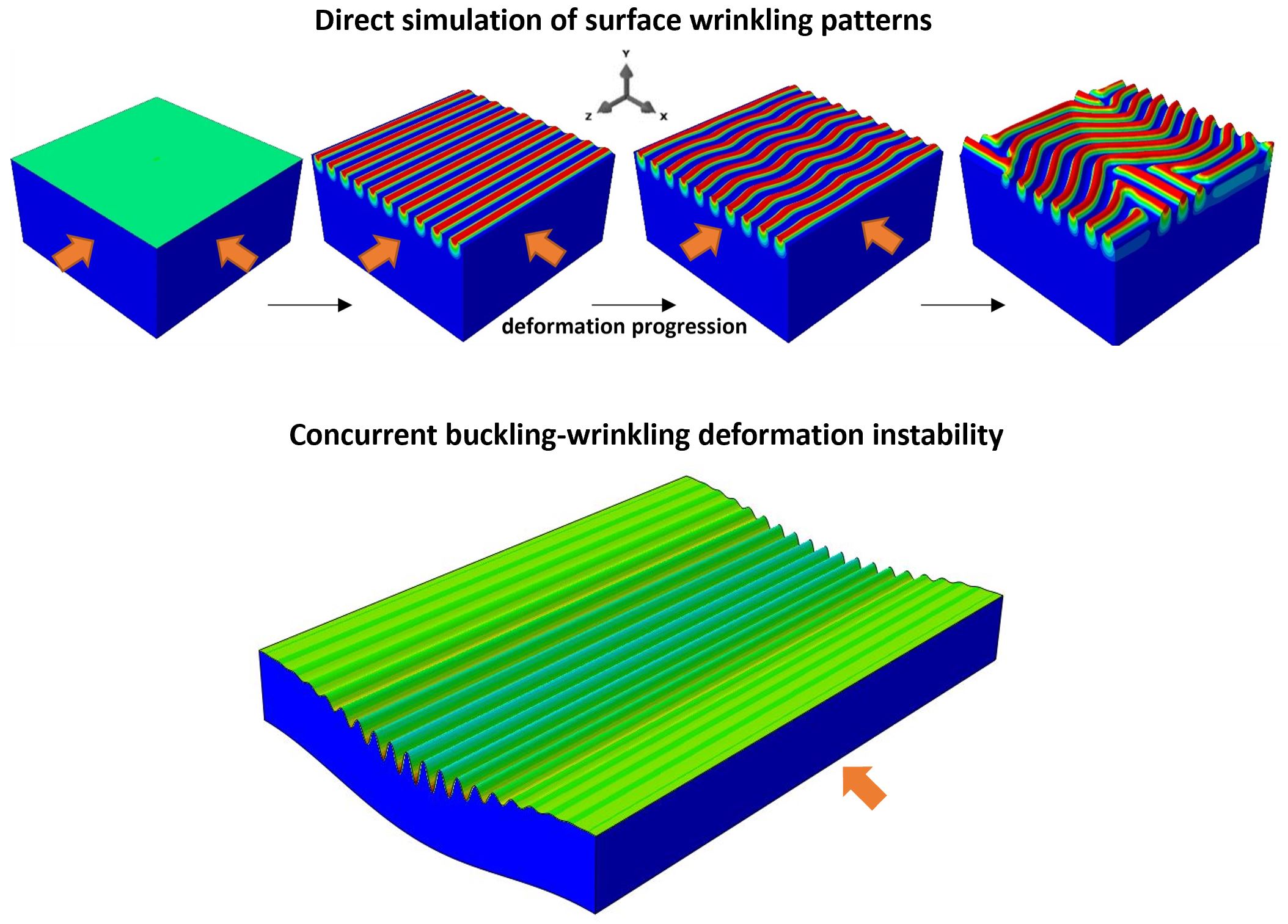
UNM physicist investigates unexplained behavior of cell receptors
UNM Associate Professor James L. Thomas, assisted by local high school student Ennis Quinn, has been using computational modeling to explain unusual patterns in receptor distribution on cell membranes. Their distribution throughout the surface of a cell can have a considerable effect on intercellular communications, which, in turn, influence a wide variety of bodily processes.
Distinguished Professor Hua Guo solves 30-year ozone mystery
A group of researchers from the University of New Mexico Department of Chemistry and Chemical Biology, led by Distinguished Professor Hua Guo, have teamed up with colleagues from Texas A&M University to understand more about the photochemistry of Earth’s ozone. A paper authored by the group and recently published in the Proceedings of the National Academy of Sciences of the United States of America (PNAS) offers a long-awaited explanation for the “odd” behavior of ozone molecules in our atmosphere.
UNM biologists study Antarctic viruses
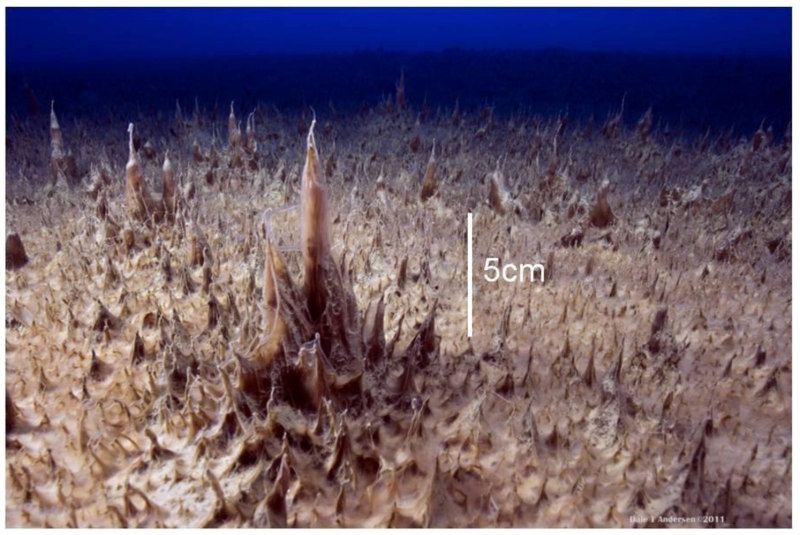 Biologists at the UNM Vesbach Lab have been using Center for Advanced Research Computing resources to analyze viruses found in the McMurdo Dry Valleys of Antarctica. Funded by a grant from the Joint Genome Institute, Ph.D. student David Robinson and Professor Cristina Takacs-Vesbach, in conjunction with researchers from Miami University and the McMurdo Dry Valleys Long Term Ecological Research Project, are assembling the metagenomic data from microbial mat samples in the hopes of gaining a better understanding of how viruses and bacteria interact.
Biologists at the UNM Vesbach Lab have been using Center for Advanced Research Computing resources to analyze viruses found in the McMurdo Dry Valleys of Antarctica. Funded by a grant from the Joint Genome Institute, Ph.D. student David Robinson and Professor Cristina Takacs-Vesbach, in conjunction with researchers from Miami University and the McMurdo Dry Valleys Long Term Ecological Research Project, are assembling the metagenomic data from microbial mat samples in the hopes of gaining a better understanding of how viruses and bacteria interact.
Miyake Research Group improves quantum computing algorithms
The Miyake Research Group has been taking part in an initiative called the Software-Tailored Architecture for Quantum co-design, or STAQ, project aimed at developing and improving quantum computing systems. Funded by a $15 million grant from the National Science Foundation, STAQ seeks to make quantum computing a more practical tool for future research.
Gold Lab works toward improved HIV treatment
 UNM’s Gold Lab, headed by Assistant Professor Brian Gold, is using computational modeling to learn about HIV. Gold hopes that a better understanding of the chemical processes that allow the virus to flourish will enable him and his lab to design improved treatments.
UNM’s Gold Lab, headed by Assistant Professor Brian Gold, is using computational modeling to learn about HIV. Gold hopes that a better understanding of the chemical processes that allow the virus to flourish will enable him and his lab to design improved treatments.
UNM researchers use artificial intelligence to improve electrical grids
A research team led by UNM Professor Manel Martínez-Ramón of the Department of Electrical and Computer Engineering is developing an algorithm that will help electrical grids use energy more efficiently. The project is a part of the New Mexico EPSCoR Smart Grid Center grant, funded by the National Science Foundation.
UNM computer scientists compete in NASA Space Robotics Challenge
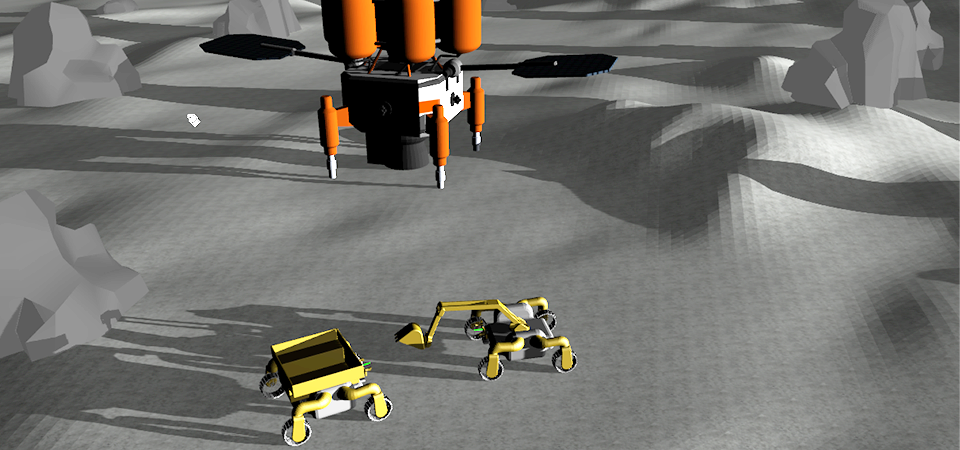 A team of University of New Mexico computer scientists led by Research Assistant Professor Matthew Fricke is competing with diverse computer research groups to develop an algorithm that would instruct robots to autonomously find, collect, and stockpile resources on the Moon. The competition, presented by Space Center Houston and NASA’s Centennial Challenges Program, offers a variety of cash prizes to the top twenty-five teams.
A team of University of New Mexico computer scientists led by Research Assistant Professor Matthew Fricke is competing with diverse computer research groups to develop an algorithm that would instruct robots to autonomously find, collect, and stockpile resources on the Moon. The competition, presented by Space Center Houston and NASA’s Centennial Challenges Program, offers a variety of cash prizes to the top twenty-five teams.
SMILab research assistant receives national recognition
UNM Civil Engineering Ph.D. student and Graduate Research Assistant at the Smart Management of Infrastructure Laboratory (SMILab) Roya Nasimi has been awarded second place in the American Society of Civil Engineers (ASCE) EMI-Structural Health Monitoring and Control (SHMC) Committee’s annual Student Paper Competition.
UNM psychology professor works toward more reliable neuroimaging analysis
A large and highly collaborative new project created by Postdoctoral Researcher at Dartmouth College Rotem Botvinik-Nezer, Senior Lecturer at Tel Aviv University Tom Schonberg, and Professor of Psychology at Stanford University Russel Poldrack seeks to understand how the methodological choices made by neuroscientists can affect research outcomes. A team led by UNM Assistant Professor Jeremy Hogeveen was one of 70 research groups from across the globe to contribute neuroimaging analyses to the project.
UNM professor uses computational simulations to advance substance use disorder treatment
UNM Assistant Professor of Chemistry and Chemical Biology Yi He is leading a research project that investigates a potentially groundbreaking way to treat drug addiction. The study uses computational modeling to understand the role of the PICK1 protein, shown in Figure 1, in the brain of an individual suffering from drug addiction.
UNM researchers use advanced computing to study COVID-19
 A wide range of University of New Mexico researchers from across main and north campuses are utilizing UNM Center for Advanced Research Computing resources to study COVID-19. Researchers from several departments at UNM, including Anthropology, Biology, Computer Science, Pediatrics, Internal Medicine, and various Health Sciences research centers are studying different aspects of the coronavirus pandemic.
A wide range of University of New Mexico researchers from across main and north campuses are utilizing UNM Center for Advanced Research Computing resources to study COVID-19. Researchers from several departments at UNM, including Anthropology, Biology, Computer Science, Pediatrics, Internal Medicine, and various Health Sciences research centers are studying different aspects of the coronavirus pandemic.
Researchers use CARC systems to understand the shapes of volcanoes
Katherine Cosburn, a Ph.D. candidate in the University of New Mexico Department of Physics and Astronomy, is leading a research initiative that uses computer modeling to better understand volcanoes and, possibly, enable scientists to more accurately predict volcanic activity. The insights yielded from her research may help geologists mitigate the damage caused by volcanoes by predicting their behavior.
UNM anthropologist to unveil new database website
Associate Professor of UNM’s Department of Anthropology and Forensic Anthropologist for the Office of the Medical Investigator (OMI) Dr. Heather Edgar is ready to unveil the New Mexico Decedent Image Database website. The site will offer qualified researchers free access to more than 15,000 full body CT scans, along with corresponding information about the deceased. The database, funded by the National Institute of Justice, is being hosted at the UNM Center for Advanced Research Computing.
Researchers develop facial recognition technology for use in firefighting
 At the University of New Mexico Department of Electrical and Computer Engineering, a team of computer engineers lead by Professor Manel Martínez-Ramón have been working towards the development of a high-tech wearable device for firefighters. The device would help emergency service workers with navigation, communication, and threat assessment during tense life-threatening situations. The projects utilizes an innovative new facial-recognition algorithm formulated for use in firefighting technology.
At the University of New Mexico Department of Electrical and Computer Engineering, a team of computer engineers lead by Professor Manel Martínez-Ramón have been working towards the development of a high-tech wearable device for firefighters. The device would help emergency service workers with navigation, communication, and threat assessment during tense life-threatening situations. The projects utilizes an innovative new facial-recognition algorithm formulated for use in firefighting technology.
Cavanagh studies the neurological origin of pleasure
Associate Professor James Cavanagh of the University of New Mexico Department of Psychology is working on a project that would help psychologists study depression, and its treatment, with greater accuracy. Cavanagh’s research, funded by a grant from the National Institute of Mental Health, seeks to identify a consistent quantifiable indicator of anhedonia, or the inability to feel pleasure.
McCullough assembles evolutionary tree of birds
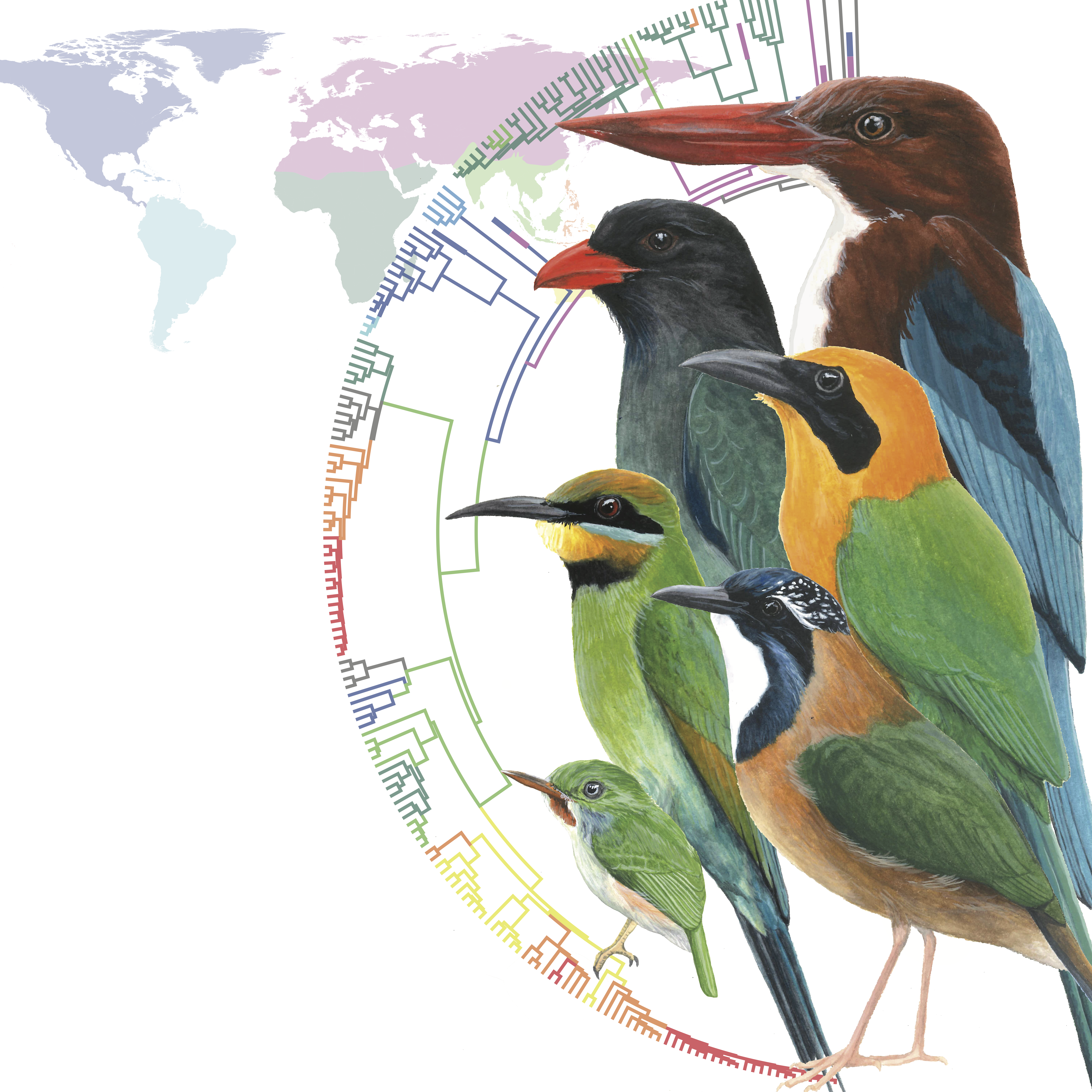 Though science has advanced considerably since the days of Charles Darwin, the evolutionary history of life on Earth is still largely a mystery – one being solved incrementally by the dedicated biologists who pore over fossils and genetic data to better understand the origins of species. One of these biologists is Jenna McCullough, a Ph.D. student at the University of New Mexico whose master’s thesis used Center for Advanced Research Computing resources to examine the evolutionary history of birds.
Though science has advanced considerably since the days of Charles Darwin, the evolutionary history of life on Earth is still largely a mystery – one being solved incrementally by the dedicated biologists who pore over fossils and genetic data to better understand the origins of species. One of these biologists is Jenna McCullough, a Ph.D. student at the University of New Mexico whose master’s thesis used Center for Advanced Research Computing resources to examine the evolutionary history of birds.
Professor Terry Loring studies the strange math behind hybrid conductor-insulators
Environmental Data Initiative receives NSF grant
The National Science Foundation has awarded a second grant to the Environmental Data Initiative to continue gathering and storing ecological data. A collaboration between researchers at the University of New Mexico, the University of Wisconsin, and the University of California – Santa Barbara, EDI aims to store environmental data in a way that is Findable, Accessible, Interoperable, and Reusable (FAIR).
SMILab deploys wireless smart sensors on Sandia Peak Tramway
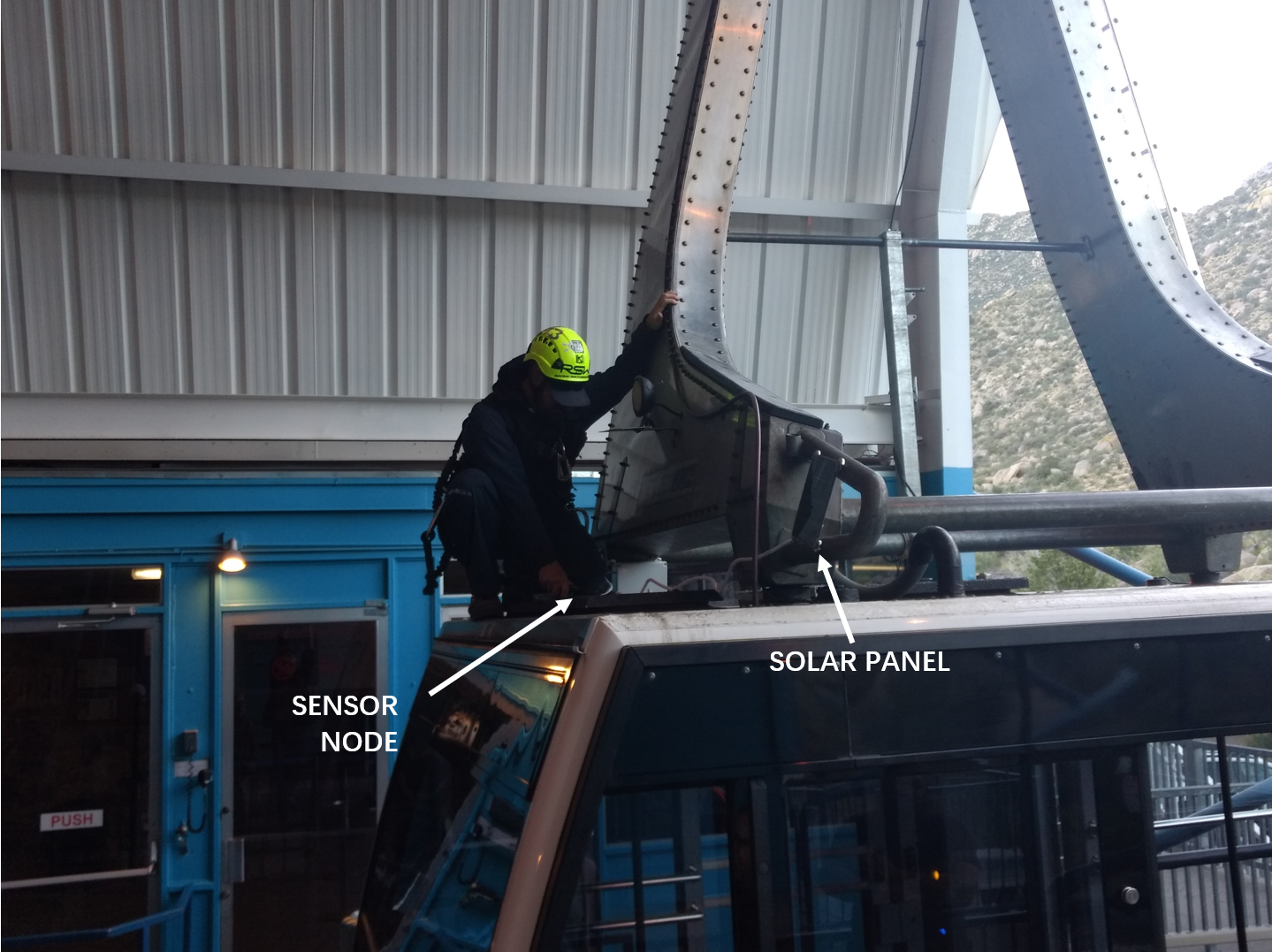 Researchers from the Smart Management of Infrastructure Laboratory (SMILab), based at the UNM Center for Advanced Research Computing, have installed two wireless smart sensors on the Sandia Peak Tramway. The sensors, designed and developed by SMILab researchers, will collect accelerations, angles, and displacements of both the towers and the cars under different performance conditions.
Researchers from the Smart Management of Infrastructure Laboratory (SMILab), based at the UNM Center for Advanced Research Computing, have installed two wireless smart sensors on the Sandia Peak Tramway. The sensors, designed and developed by SMILab researchers, will collect accelerations, angles, and displacements of both the towers and the cars under different performance conditions.
Engineering team looks at using augmented reality to fix ailing infrastructure
Civil infrastructure in the United States is in serious disrepair. The American Society of Civil Engineers published an Infrastructure Report Card in 2017, in which it gave the crumbling national infrastructure a dismal grade of D+. According to the report card, over 9 percent of the 614,000-plus US bridges are structurally deficient, and their average age is 43 years. Professor Fernando
Method delves under Earth's mantle for more detailed look
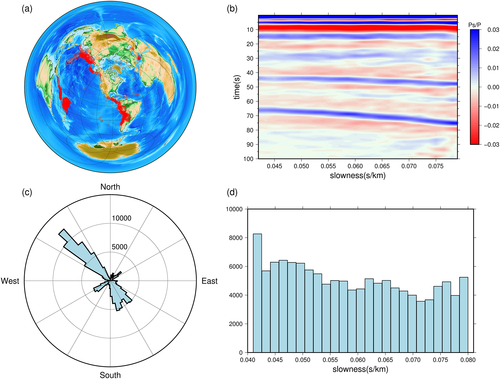 The Earth is composed of four layers: the crust; the mantle, which is divided into the upper mantle, lower mantle, and transition zone in between; the hot liquid outer core, and a solid inner core. In his paper Application of Ps Scattering Kernels to
The Earth is composed of four layers: the crust; the mantle, which is divided into the upper mantle, lower mantle, and transition zone in between; the hot liquid outer core, and a solid inner core. In his paper Application of Ps Scattering Kernels to
Marten research provides insight into breeding, conservation
The American pine marten and Pacific marten are cute, furry animals reminiscent of weasels or ferrets. They live in forests all over the west, from islands off the coast of
Colombian researchers partner with UNM professor to conduct drone rotor simulations using CARC systems
Associate Professor of Mechanical Engineering Dr. Svetlana Poroseva and colleagues from Colombia used CARC systems to conduct simulations to compare accuracy and affordability of two different computational methods to simulate small rotors in hover flight.
Research looks to better understand widespread fungal disease
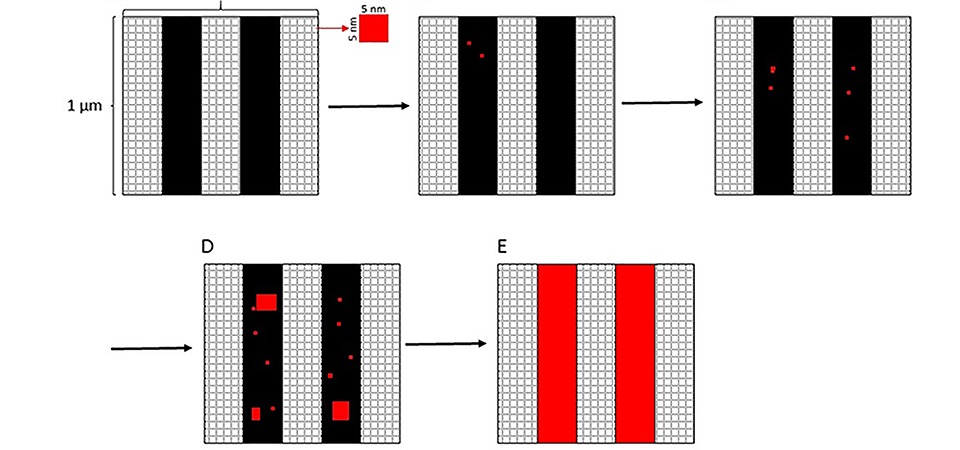 Candida albicans is the most common viral pathogen and causes candidiasis, an infectious disease of the lungs and other organs. Healthcare costs associated with
Candida albicans is the most common viral pathogen and causes candidiasis, an infectious disease of the lungs and other organs. Healthcare costs associated with
Fire navigation research presented to NM Legislature
Firefighters entering a burning building step into a critically risky and potentially lethal environment. How a firefighter handles this combination of factors is a matter of life or death. University of New Mexico Electrical and Computer Engineering (ECE) student Manish Bhattarai presented a project he has been working on to the New Mexico Legislature. End-to-End Training of Deep Learning Systems for Scene Understanding, Path Planning
Neuroscience researchers use CARC to store large stash of data
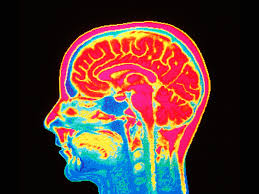
Psychology Clinical Neuroscience Center (PCNC) and Department of Psychology researchers studying the brain use a system at the UNM Center for Advanced Research Computing, as well as another one on-site, to store data generated by their projects.
Biologist looks at virus genetic past to try to predict future outbreaks
Dancer, researchers collaborate to expand connection between arts and engineering
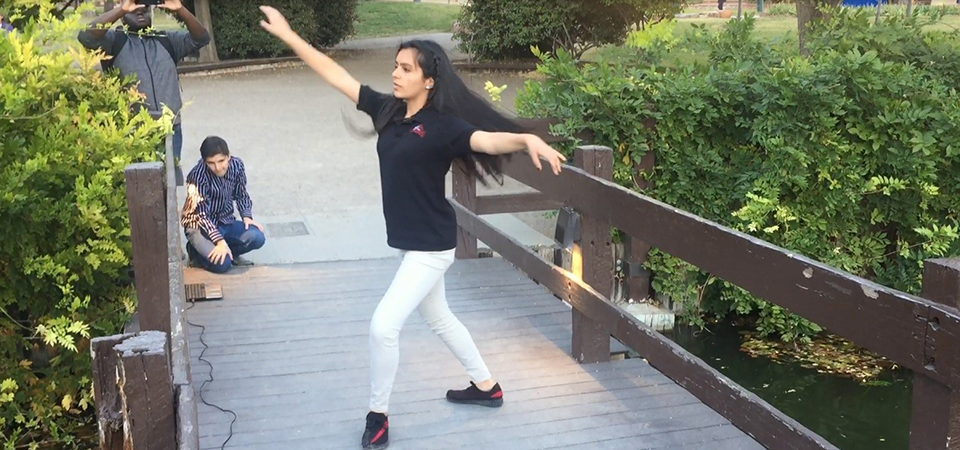 Dancing and engineering seem worlds apart, one artsy, the other all about math and technology. But a research group of computer engineering students housed at the University of New Mexico Center for Advanced Research Computing has collaborated with a local dancer to improve her performance while learning more about the possibilities of their own work.
Dancing and engineering seem worlds apart, one artsy, the other all about math and technology. But a research group of computer engineering students housed at the University of New Mexico Center for Advanced Research Computing has collaborated with a local dancer to improve her performance while learning more about the possibilities of their own work.
Research shows director networking has impact on company success
On corporate boards, who the directors know and the networks they belong to can make a difference in the success of the company in securing excellent credit ratings crucial to its success.
Researchers seek ways to prevent dangerous, costly railroad crashes
There are hundreds of railroad overpasses all over the country that get hit regularly by vehicles passing underneath. Professor Fernando
UNM database of deceased people a national first
 People die. All the time. From many causes, including old age, disease, accidents, murder. But researchers can learn from these deaths. Dr. Heather Edgar,
People die. All the time. From many causes, including old age, disease, accidents, murder. But researchers can learn from these deaths. Dr. Heather Edgar,
Robot swarms aid NASA journey to Mars
The Mars rover Curiosity is in the news right now as NASA celebrates the robot’s five-year sojourn across the planet surface. The rover is sending back breathtaking images and collecting data in anticipation of humans arriving in the 2030s. But before humans arrive, a swarm of smaller robots may already be on the planet, navigating the terrain and working together like a colony of ants to collect resources.
UNM researchers work to meet wind power goal
There is a national goal to increase wind energy in the United States to meet 20 percent of the demand for electricity by the year 2030. However, there are some challenges to reaching this goal. Two of the issues facing wind energy farms are the wakes emitted from each turbine, which reduces the efficiency of turbines around them, and the noise levels caused by the rotors. Dr. Sang Lee and his team are using the resources at the UNM Center for Advanced Research Computing to overcome these issues in order to build more efficient, more powerful wind turbines and wind farms to meet that goal.
Research aims to help patients at risk for diabetic blindness
Diabetic retinopathy (DR) is one of the leading causes of blindness in the world and affects up to 80 percent of diabetic patients. However, with proper detection, the effects of DR can be often treated and blindness prevented. Computer Science doctoral student Jeremy Benson is looking at more effective screening methods.
LANL-CARC collaboration works to improve wildfire simulation program
A collaboration between Los Alamos National Laboratories and CARC is helping the lab improve a wildfire simulation program, as well as preparing students for careers in scientific research.
CARC helps UNM race car team’s need for speed
The University of New Mexico Formula SAE is making race cars go faster with CARC's help.
Researchers seek ‘magic bullet’ using CARC systems
UNM researchers are working to encapsulate toxic chemotherapy in nanoparticles.
UNM researchers tackle next generation of VR display
UNM researchers work to solve a visual issue that leaves VR users with sickening symptoms.
Mountain lions on the edge
New research is looking at Integrating Conservation into Urban Planning through Predictive Modeling: Can city dwellers and wildlife coexist safely and peacefully?
UNM physicist discovers strange forces acting on nanoparticles
A new scientific paper published, in part, by a University of New Mexico physicist is shedding light on a strange force impacting particles at the smallest level of the material world.
Theoretical physicists at UNM manipulate light with nanoscale objects
Scientists at The University of New Mexico studying the field of nanophotonics are developing new perspectives never seen before through their research. In turn, the understanding of these theoretical concepts is enabling physical scientists to create more efficient nanostructures.
